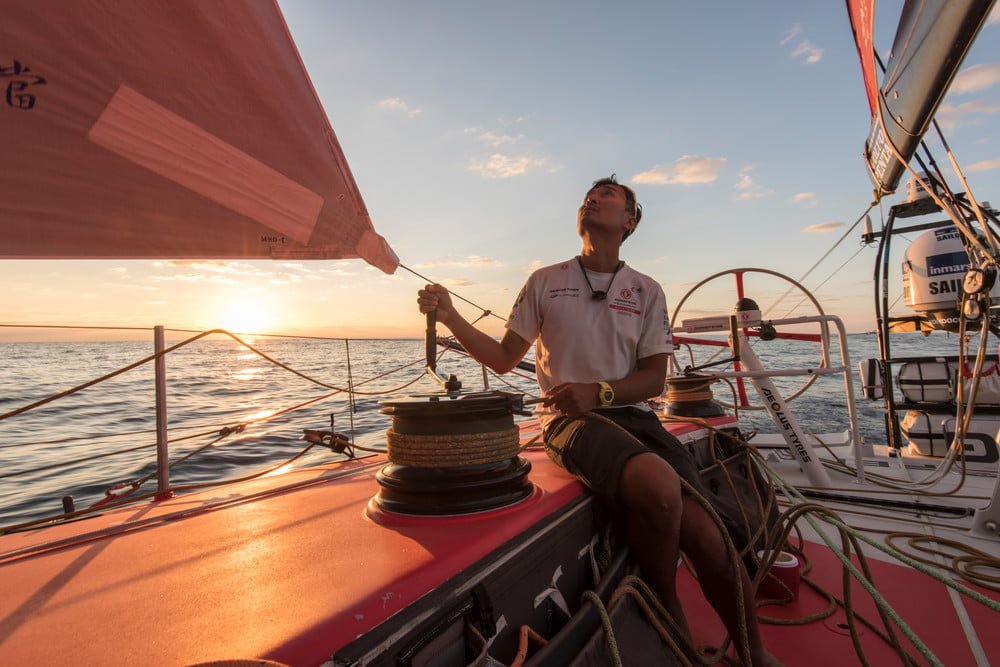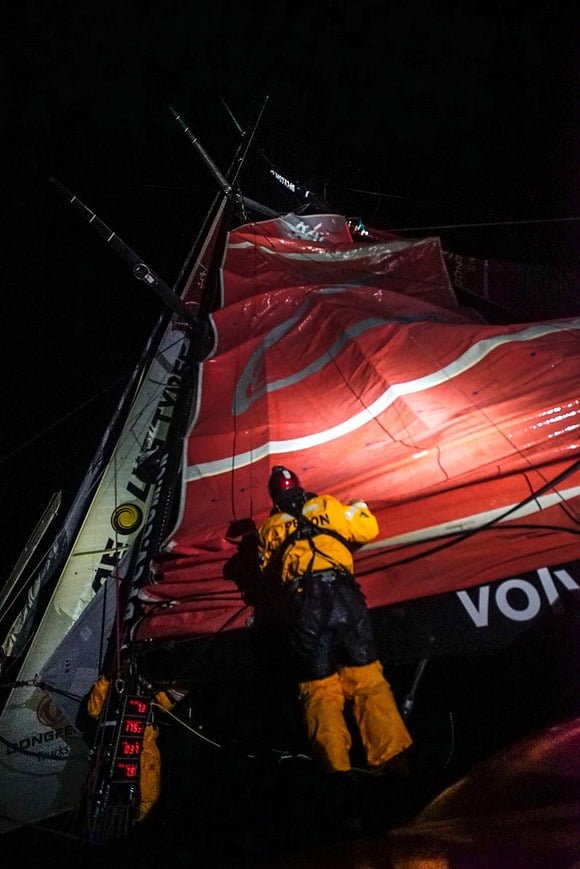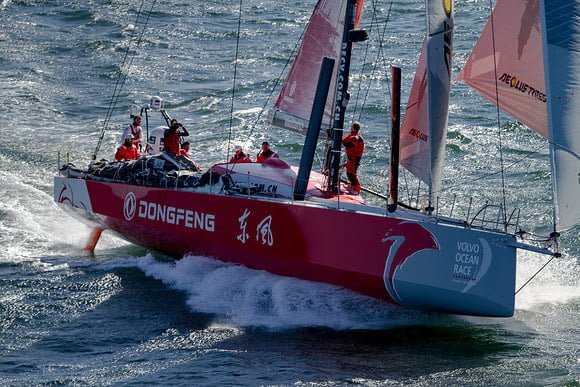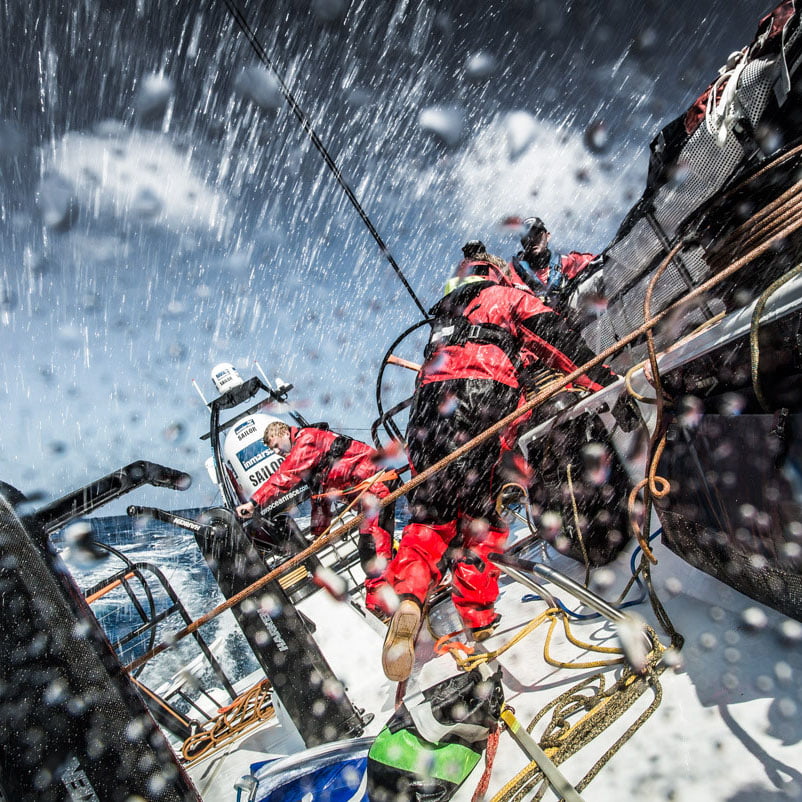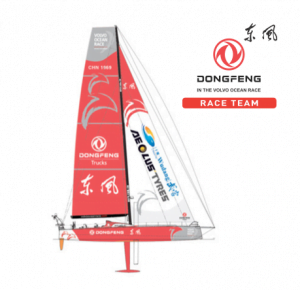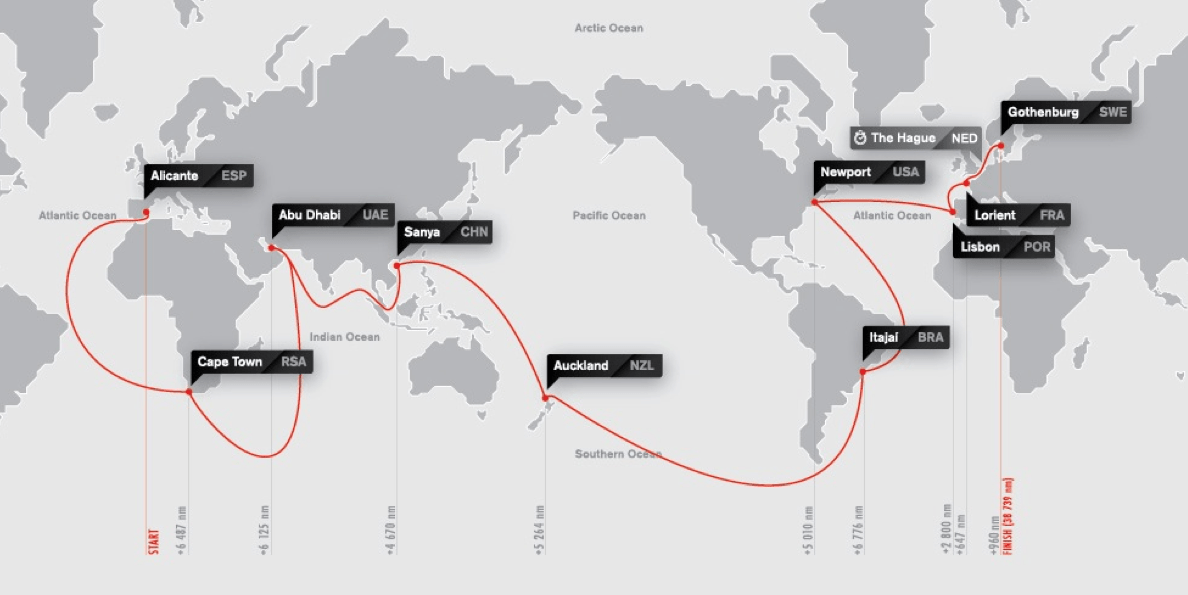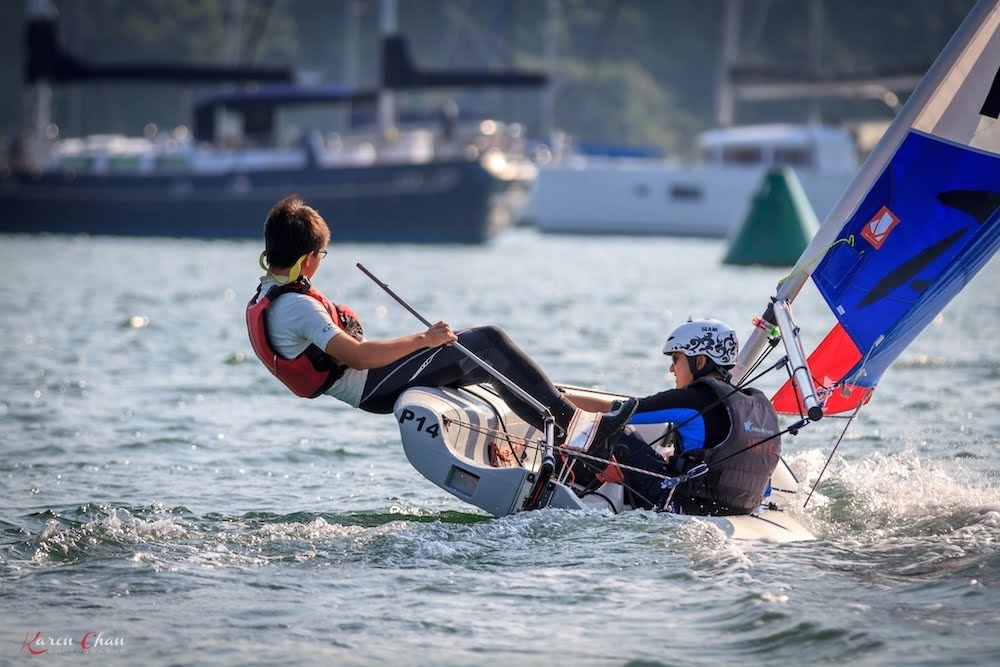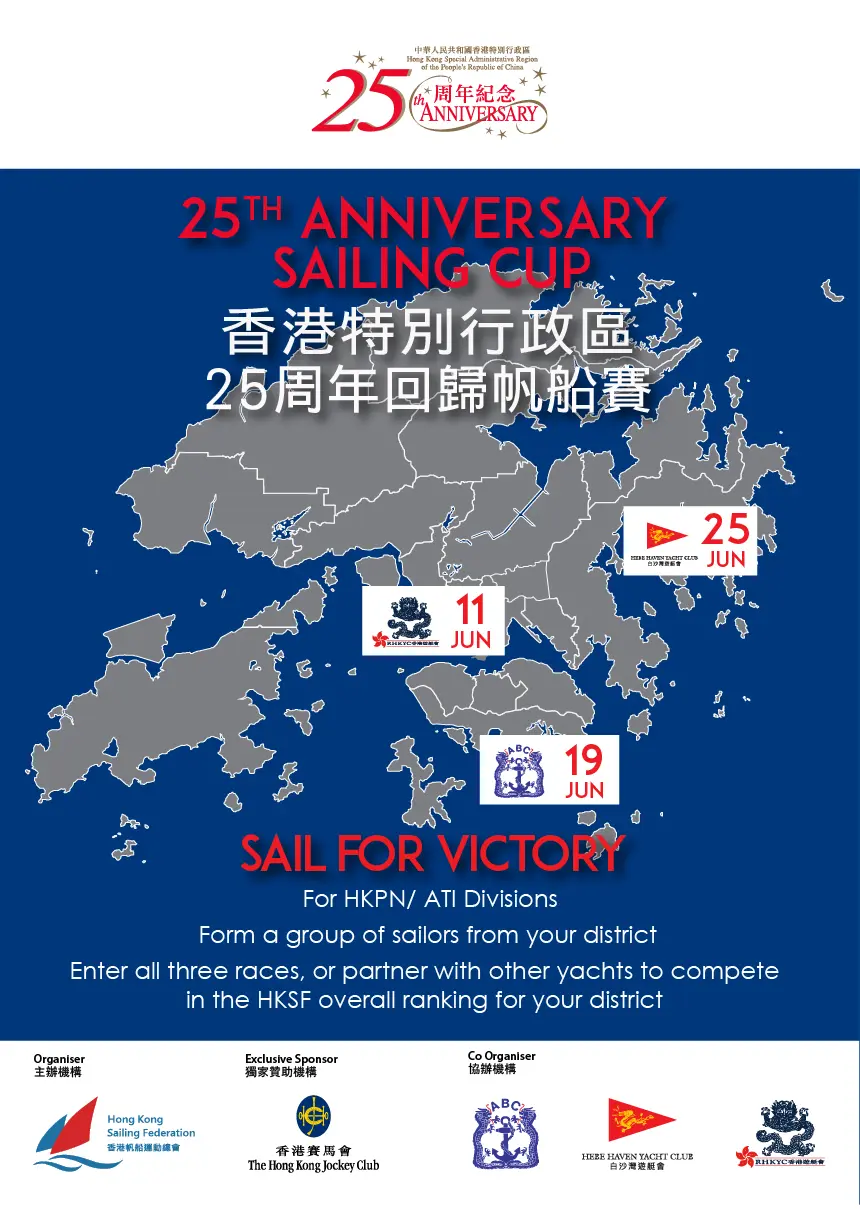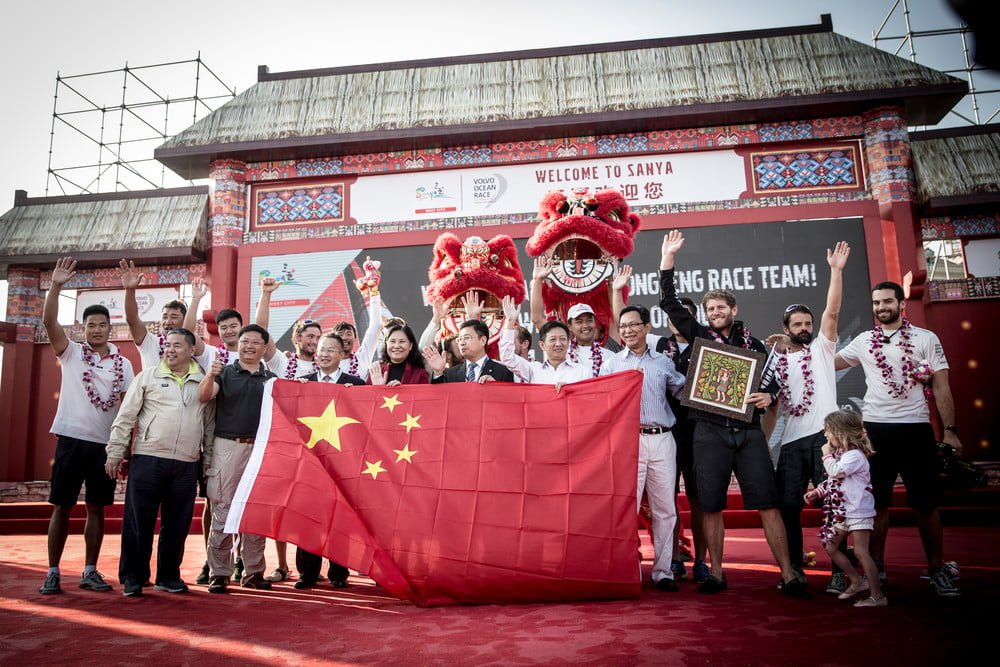 Leg three victory is my Everest – Caudrelier
Leg three victory is my Everest – Caudrelier
There are so many ways that the Dongfeng Race Team could have lost the chance to win the light-air marathon from Abu Dhabi to Sanya in China.
Leading from the first 24 hours to the finish, 23 and a half days later, 5,403 nautical miles sailed and eight different gulfs, oceans and seas, is not necessarily the most advisable way to try and take the spoils.
In light air, especially, the leading boat is always exposed, always in danger of falling into a hole in the weather that its rivals can simply sail round and always in danger of being the first to encounter trouble – be it heavy shipping, debris in the water, an adverse current or an agonising go-slow moment rounding a headland.
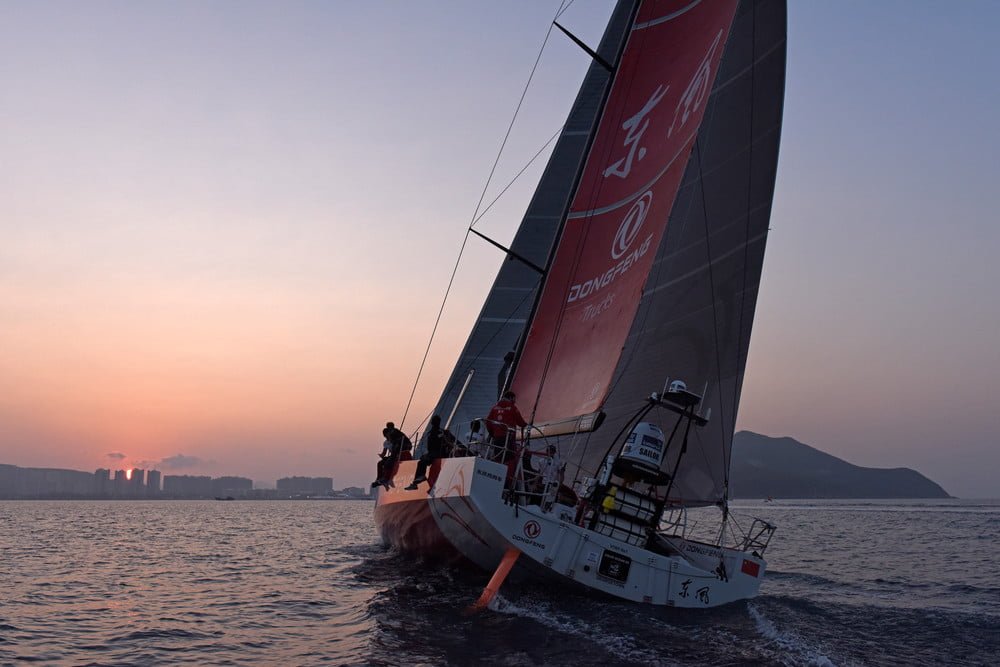
Sometimes boats win long legs from the front – all the way – by banging a corner, taking a flier away from the fleet at the start and gambling that it might pay off in the long run. Think Swedish Match in leg two of the Whitbread/Volvo from Cape Town to Fremantle in 1997-‘98.
But the red boat from China that was heading to its home port on this trickiest of legs did not do that. The crew under Frenchman Charles Caudrelier, eked out a small lead at the end of the first day and then managed to hold it – out front – to complete an historic stage win, the first by a Chinese boat in the 41-year history of the Volvo Ocean Race.
The qualities on show in legs one and two, when Dongfeng finished a close second on both occasions, were to the fore on leg three – good boat speed downwind, excellent trimming and driving skills and a navigation/tactics team, of Caudrelier and fellow Frenchman Pascal Bidegorry, that never dropped the ball.
But it was not easy leading for hour upon hour through the uncertain weather of the Arabian Sea, the unpredictable impact of the wind shadow south of Sri Lanka and the Russian roulette of the virtually windless Malacca Strait – the single toughest phase for Caudrelier and Bidegorry.
No surprise then that the word “stress” was on Caudrelier’s lips as he looked back on a marvellous sustained exhibition of tactical racing that has placed Dongfeng at the top of the leaderboard after three of the race’s nine legs. No surprise too that Caudrelier, a decorated solo and multihull sailor who was part of the Groupama Volvo Ocean Race–winning crew four years ago, should describe this win as one of the very best of his career.
“For me this is like my Everest,” he said after all the celebrations on the dockside in China had finished. “Winning a leg of the Volvo Ocean Race as a skipper is something I never imagined could have happened to me even a year ago. For sure, compared to the Groupama Sailing Team, I know how much energy, how much experience we had – and we had a faster boat than our rivals – and even then it was hard to win a leg. So to do it on a one-design boat with the Chinese aspect of our team, is a dream for me. It was my goal – I will admit that – but I didn’t think we would achieve it so quickly.”
Like others in this unique outfit, Caudrelier quickly moved on to underline the main purpose of the Dongfeng Race Team sailing project. It is clear that winning a leg of the Volvo Ocean Race – even into Sanya – will be worth very little in the long run to Caudrelier and the campaign’s managers if this does not help to stimulate the roots of offshore sailing in China.
“If we even win the race but there is no more offshore sailing in China afterwards, then the project will have done well but we will have failed in our longer term objective,” said Caudrelier who hopes to sail with his newly-blooded Chinese sailors in future events and looks forward to more Chinese-sponsored and crewed entries in the next Volvo Ocean Race.
Caudrelier touched there on the subject of winning – winning the race overall. This was an absurd proposition for Dongfeng at the start, given its mission to include inexperienced young Chinese sailors on every leg of the race. On this occasion the team on board included the shore team expert Chen Ying Kit and pitman Liu Xue (Black).
But there is no getting away from the fact that the red boat representing China is now seriously in the mix for one of the top-two podium places – it’s principal rivals being Ian Walker’s pre-race favourite, Abu Dhabi Ocean Racing, which is one point behind in second place overall and Bouwe Bekking’s Team Brunel, a further three points back in third.
Caudrelier is not rushing ahead though. “My last experience of the race reminds me that this is only leg three,” he said. “There are nine legs in the race and things can change and we have to last the course. It is very easy to come fifth in any leg – Brunel, Mapfre (skippered by Xabi Fernandez) and Abu Dhabi are really close to us in performance and Alvimedica (Charlie Enright) is improving with every leg. So the differences are very small and maybe we have been lucky – so far.”
Caudrelier had an interesting challenge when he took on the job of skipper of the Dongfeng team. He had to choose some experienced offshore professionals to form the core of his crew; he had to help select and then train up some Chinese newcomers to the sport; and then he had to ensure that this unprecedented mix, that spans distant cultures, gelled together to form a unit that could survive the pressure of high level competitive racing in one-design boats for days on end.
The charming Frenchman remains most proud of the choices he made in his core team – people like Bidegorry, Kevin Escoffier (trimmer, driver and technical guru) and Thomas Rouxell (trimmer and driver) – and getting them to work so well together. “I think what I did best in this project was to choose my guys,” he said. “A lot of people thought they would not be a very good team because they had not done a Volvo Ocean Race before – they asked who are these guys? Why don’t you take some sailors from Groupama? I chose them because I trust them and this is the most important thing and because they trust me.”
“Thomas is a really fantastic trimmer and driver – he is always there to help, Kevin is doing everything on board and Pascal and I work well together on navigation and tactics. We have already worked a lot together and maybe that is key for the team. We know each other, we know how we think and Pascal is doing a fantastic job.”
Caudrelier name-checked all the others on board, singling out the Chinese for their unfailing enthusiasm for the task and the rookie Australian/English solo sailor Jack Bouttell, a product of the Cowes-based Artemis Offshore Academy programme that trains young sailors in the art of solo ocean racing. “He did a good job,” summarized Caudrelier. “He was good. For a 24-year-old, he drove very well and he is strong.”
Hong Kong’s Cheng Ying-kit was part of the half Chinese half Western crew
